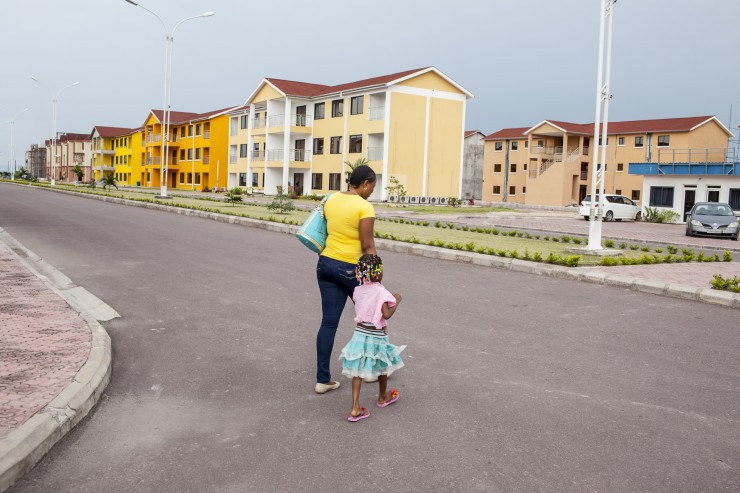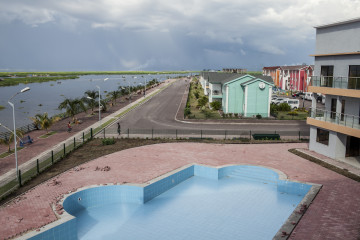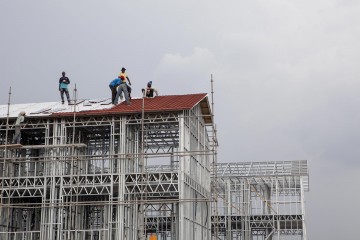
Western living in the Congo is possible at Cité du Fleuve. There is no shortage of water and electricity, and there is a speed limit on the roads: unheard-of order in chaotic Kinshasa. The project is popular with members of the Congolese diaspora returning now that the economy is picking up.
Over the course of fifty years, Kinshasa’s population has grown by a factor of twenty-five, to an estimated ten million people. During the next ten years, the population is set to increase by half as much again. Just to accommodate these newcomers, the city will have to expand by an area the size of the city of Rotterdam, including its water and ports, in the next twenty years.

La Cité du Fleuve is the one and only place in Kinshasa where you can live near the river.
At least forty buildings more than ten stories high are currently under construction in the city centre. But there is one place where the future is literally being created right beneath your feet: two artificial islands in the Congo River called Cité du Fleuve.
At least forty buildings more than ten stories high are currently under construction in the city centre. But there is one place where the future is literally being created right beneath your feet: two artificial islands in the Congo River called Cité du Fleuve. A whole new city will arise here in the years ahead: with waterside villas, schools, restaurants, offices, a hotel, a cinema, shops and tens of thousands of apartments.
A new city will arise here in the years ahead
Whereas initially most of the buyers were from inside Congo, now half of the number of home sold are going to members of the diaspora who are returning because of the strengthening economy. People who have lived in Europe or the United States are used to different living standards. A spacious house in which the things that are supposed to work actually do work. No chaotic scenes right outside the front door. A constant supply of electricity and water. And somewhere where children can play outside in safety.

The apartments – from 175 thousand dollars for 110 square metres – are so popular demand is outstripping the pace of construction. People are buying apartments without even seeing them first, or sending a member of their family to view them.
Projects such as this give people something to be proud of
‘Our biggest challenge is the everyday struggle with growth,’ says Robert Choudury, a French-Lebanese businessman who together with a British hedge fund is building the new neighbourhood in the river. To make the project accessible to the Congolese middle class that is starting to emerge in piecemeal fashion, he will shortly be opening a bank on the island. The Real Estate Bank of the River will be the first bank in Congo to issue loans to people wishing to purchase a home on credit.


Nevertheless, La Cité du Fleuve is a project for the happy few, but critical noises are few. Even the farmers who reclaimed land from the Congo river and are now threatened by the project, are protesting only intermittently. Their loss of income does not match the amount they receive if they are bought out, but the desire to live like the rest of the (Western) world is exceptionally strong, according to Filip de Boeck, professor at the Belgian Institute for Anthropological Research in Africa. ‘Projects such as La Cité du Fleuve make dreams, give people something to be proud of. It shows that Congo is able to modernise its cities and that it is capable, as a country, of participating in the modern age,’ he says. That they themselves have no access to this perfect world, or are even excluded from it, does not seem to diminish this dream for the people at all.